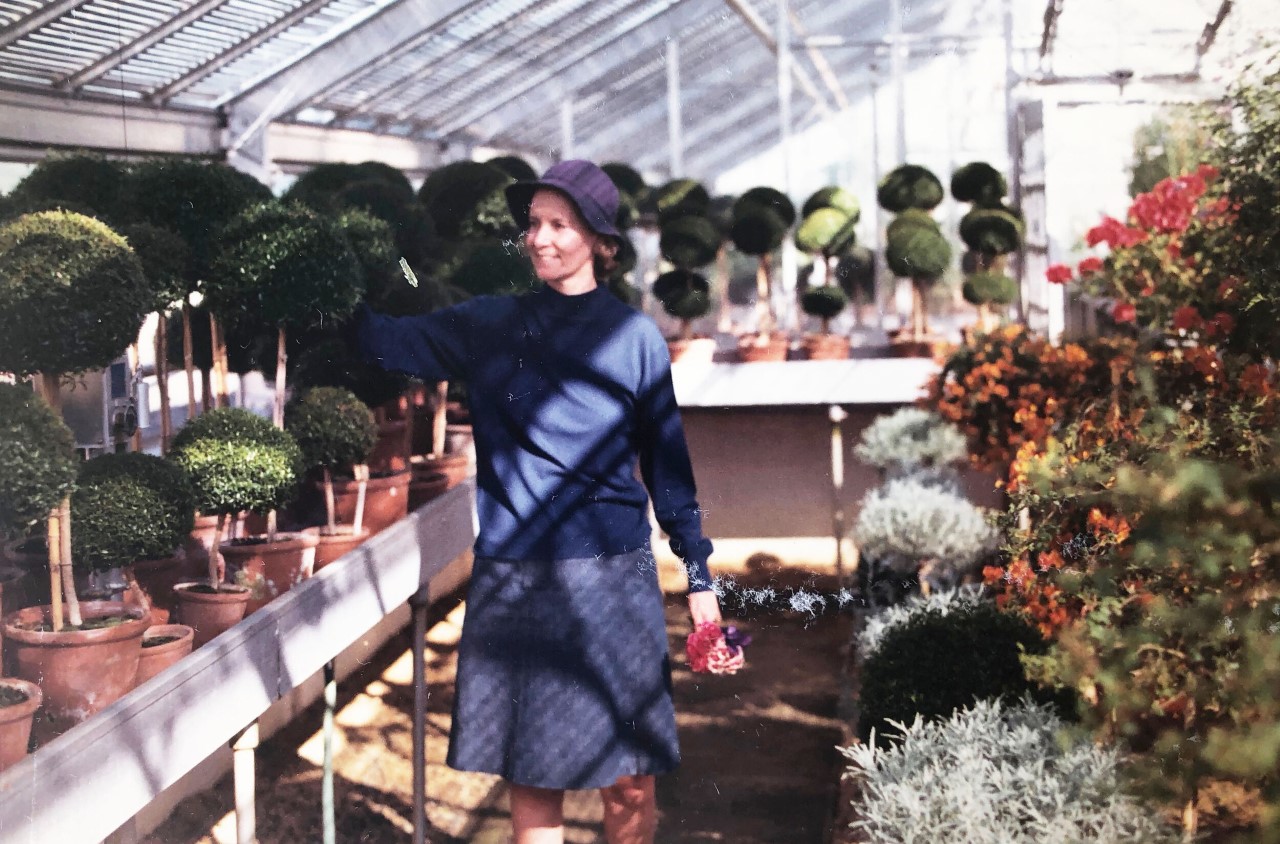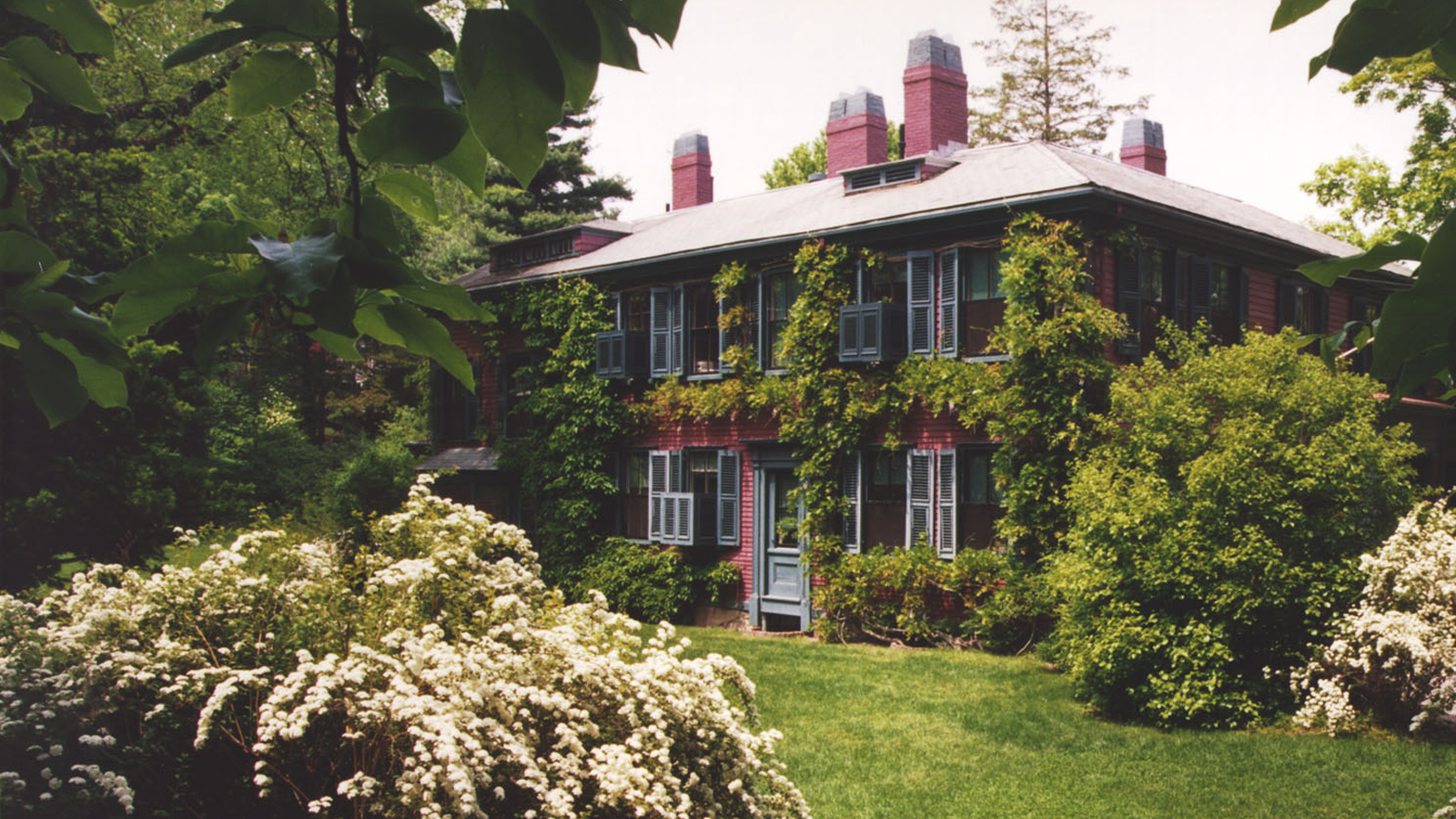Caroline Mesrobian Hickman teaches American architectural history in the School of Architecture, Preservation, and Planning at the University of Maryland, College Park.
Her research interests and publications focus on the architecture of Metropolitan Washington, DC and the preservation of its historic buildings. Her current project concerns the prolific architectural career of her grandfather, Mihran Mesrobian, who practiced in Ottoman Turkey and the Washington area.

Q: How did you come to know of Frederick Law Olmsted?
A: I first encountered Frederick Law Olmsted’s landscapes when I was very young, visiting Biltmore in Asheville, North Carolina. My parents believed that gardens were essential components of living. My father, who was an architect, designed and installed gardens (plantings and hardscapes) for the successive houses in which we lived. To get ideas for professional and personal projects, my parents often took my sister and me to places with architectural and landscape interest such as Biltmore. I remember driving through the approach road to Biltmore House — when I was about four years old — and thinking this was the most beautiful forest I had ever seen. I couldn’t wait to see what the next curve in the road would bring. I learned much later that this landscape was Olmsted’s. It was designed to appear natural, but very much planned, even for the choice of plants. I was hooked! I still have that sense of awe and comfort when I drive through Olmsted’s wooded fairyland today. Perhaps that is why I am so drawn to John Singer Sargent’s portrait of Olmsted, standing in the forest he created at Biltmore, that can be seen on the Olmsted 200 website.
Q: In your opinion, why do FLO’s work and ideas still matter 200 years after his birth?
A: Olmsted’s ideas and work matter today because he developed them in reaction to a country that was losing the healthy scenic qualities he had known as a boy. At the time, the US was becoming more congested, urban, and bad for human health. Not only have the country and world continued to develop in the way that he feared, but at an even faster pace. The spaces he created for people to breathe more easily have become recognized as irreplaceable treasures that constantly need defending in the midst of an ever more frenetic world.
Q: Why did you want to do this exhibit?
A: I wanted to celebrate Olmsted because his amazing work is at the intersection of nature, landscape, and architecture, which is where my own deepest professional and personal interests lie. It was the collaboration with the National Association for Olmsted Parks and the Oak Spring Garden Foundation—and the tireless efforts of Dede Petri, Sir Peter Crane, and Max Smith, OSGF’s graphic designer—that made it possible. I am very grateful to all of them.
Q: How have Olmsted Sr. and Jr. influenced your work?
A: The Olmsteds’ work broadened the parameters of architecture. I teach American architectural history. For my survey course, I chose a textbook that discusses Olmsted Sr.’s seminal projects such as Central Park. Some of my students have visited the park, but none have heard of Olmsted himself and have no idea why this public space is so important historically. I’m able to teach students about the vital relationship of landscape and architecture—and the importance of parks to urban planning—because of Olmsted’s work.
Q: In the wake of the pandemic, how has public space taken on a new meaning and significance?
A: I do think public space has taken on a new significance during the pandemic. Over the past two years, large outdoor spaces have become the one shared environment in which people can feel safe. Olmsted’s vision of places where people could seek refuge from the cares of life has become more pointedly true than he could have known. I think he would be amazed that New York continues to find green space to implement new parks, most recently opening Little Island, the island park in the Hudson River.
Q: Olmsted and the Olmsted firms valued the collaboration of multiple fields and professions in urban planning. Is that valuation of collaboration happening today? Is this a necessary precondition to successful urban design?
A: Collaboration is vital to urban planning. It is certainly not happening to the extent that it should. Olmsted’s career illustrates how hard it is, and how much of a team effort is needed, to overcome the inertia of politics and economic interests that push against the reservation and creation of public spaces. For every treasured park he built, there is another that he planned that did not get built because the groups that need to collaborate for effective urban planning to happen were not able to do so.
Q: What makes an Olmsted landscape special in your mind?
A: Olmsted’s landscapes are special because of the curated combination of contemplative and active spaces he creates, giving the impression that the viewer has been transported to another environment. Olmsted spaces are separate and more conducive to both activity and contemplation than surrounding urban areas. The way he integrates these spaces is magical and uniquely successful.
Q: Garrett Dash Nelson, now head of the Leventhal Map Center at the Boston Public Library, has written:
“Olmsted deserves credit as one of the 19th century’s transitional figures: a thinker who was raised in an agrarian society, but strove to update the political rubric of American republicanism for a new age. His faith in the social possibilities of the public sphere became a keystone belief of the Progressive movement by the early 20th century, and it remains one of the fundamental principles of American liberalism.”
Is Nelson correct in his interpretation of Olmsted’s contributions? What can we learn today from Olmsted about the social possibilities of the public sphere?
A: Olmsted believed it self-evident that all people should have the opportunity to achieve physical and mental health (an unusual idea then), and he saw access to nature as an important means to that end. In the Hartford and Staten Island of his youth, nature was close at hand. However, as America urbanized, city dwellers without financial means had less access to nature. Only concerted public action could create opportunities to experience nature where none existed, so he became a tireless advocate for public action to create those opportunities through public parks. I think it is valid to look at what Olmsted accomplished and draw the lesson that the same kind of public action that he was often able to create for parks could also be used to advocate for other public ends on which agreement can be reached that they are essential for all people. As Olmsted’s life shows, however, this is not always easy.
Q: FLO was an early advocate for the idea that public parks and green spaces have significant mental/physical health, social/community, and environmental benefits. What are your personal thoughts when it comes to the restorative value of green space?
A: Olmsted hit the nail on the head about the restorative value of green space and there is empirical research supporting his intuitive grasp of the link between health and access to nature. Tending a garden or walking in a park can lift the spirits, wash away the cares of the day and restore one’s attitude toward life. The importance of feeling connected to nature was brought home to me on 9/11. After I watched the unbelievable horrors unfolding on the television, I had to get away from the chaos and instinctively headed for my community garden plot near my house. Tending the earth and just being with like-minded lovers of the soil were incredibly soothing and restorative.
Q: In 2022, Olmsted will be turning 200 years old. When you think about Olmsted’s vast collection of works across the U.S. what comes to mind first?
A: It is hard to choose one from among Olmsted’s massive and varied projects, but of course Biltmore is closest to my heart. I intuitively sensed the power and eloquence of Olmsted’s designs so early in that landscape. Central Park also is a perennial favorite: a welcome respite after a day of museum going.
Q: As an academic, do you agree with Olmsted that the physical environment plays a significant role in the success of education? If so, why, and are universities today sufficiently attentive to this influence on their students? What can college and university leaders learn from Olmsted’s ideas about campus design?
A: I entirely agree that physical environment plays an important role in the success of education, but also that insufficient attention is given to this influence. From primary school through university, Olmsted’s ideas on mental and physical health apply. More access to nature yields healthier students and better work. I know my years as an undergraduate at Duke University were enhanced by the Olmsted Brothers work there. I appreciated the thoughtful design of the buildings and their surroundings, a unity of plan and purpose that helps foster a real sense of community. I also think of Olmsted’s vision for the Stanford University campus, which encouraged community–building, with a central quadrangle for people to gather and covered walkways connecting buildings. Educators are realizing that his idea to house students in small, low-rise cottages instead of high-rise dorms contributes to wellbeing.
Q: What is your hope for FLO’s bicentennial?
A: My hope for the Olmsted bicentennial is that Olmsted’s work and philosophy will become known more broadly and that this knowledge will build support for the preservation of the irreplaceable and often endangered Olmsted works that exist. I also hope that it will gather support for the creation of new public spaces by a new generation of landscape architects looking to Olmsted for inspiration. Working on the exhibit, I was very encouraged by the enthusiasm and dedication of staff members and volunteers who are caring for various Olmsted parks and other landscapes. The conservancies and the work of the National Park Service are vital to the continued health of Olmsted places and need our unqualified support to continue the viability of these spaces through the 21st century. We must help spread the word!
Q: 200 years from now, what do you see for Olmsted parks and places?
A: In another 200 years, I am sure our country and our planet will be ever more urbanized (I imagine something like the planet in Star Wars which is entirely one big city), and access to nature will become ever more scarce—unless we defend it. My hope is that, with the help of events such as this, people will recognize that Olmsted’s parks and places are national treasures to be preserved and used as models for more extensive efforts to avoid losing our connection to nature.











